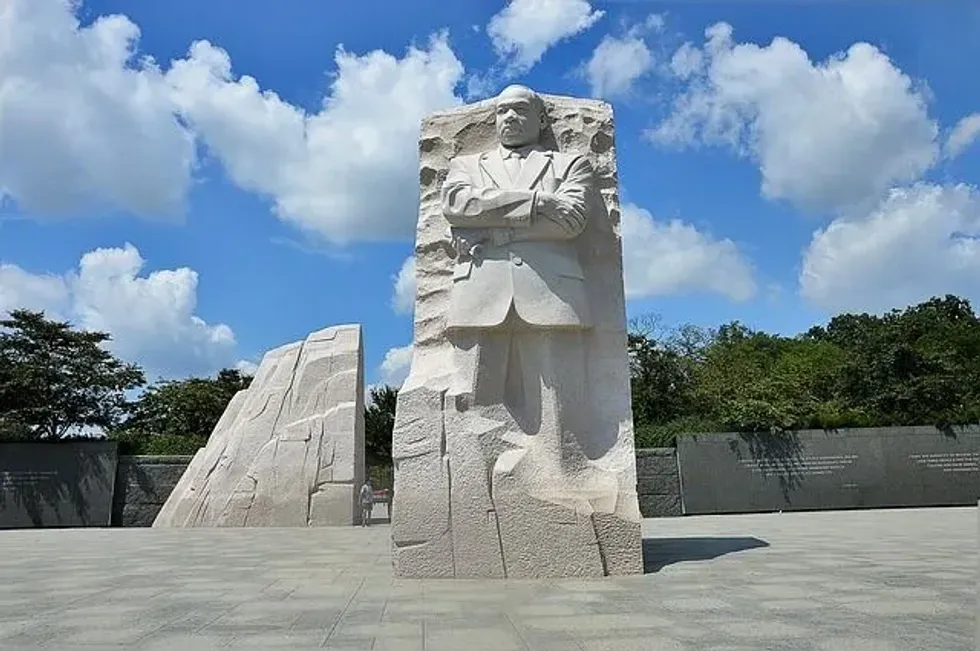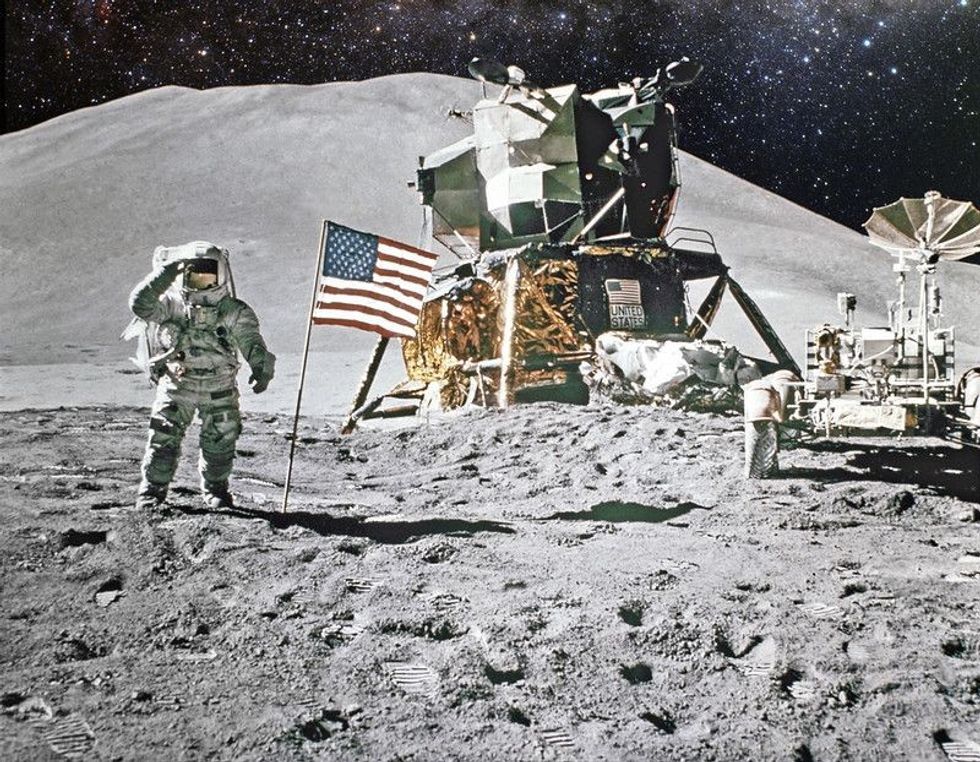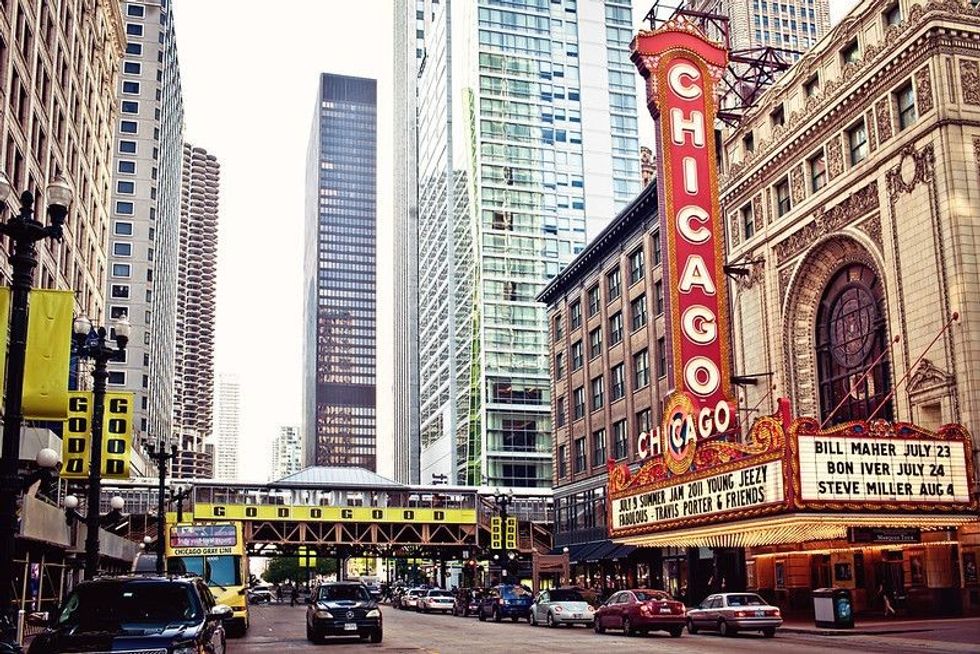Amazing 1963 Facts That All History Buffs Will Absolutely Adore

History is an ever-changing concept that many people hardly pay attention to, while it is also fascinating for ardent history lovers to follow over the years.
Witnessing historical events is impossible, but a single glance at historical records through books and lists can greatly help to keep up with the times. History lessons are not simply meant for you to know about old stuff; they teach life lessons with things any classroom can hardly discuss.
1963 marks its prominence in history as a significant year with several instances that transformed many lives with its course. From fun occurrences to grave happenings, there is nothing this year was unable to experience.
While going back in time is entirely impossible, but this list of amazing 1963 facts can be a great source of knowledge for history buffs and other curious minds.
Before heading over to learning all about the year 1963, let's go through the 1939 facts and 1956 fun facts to strengthen your historical facts knowledge.
Number One Hits Of 1963
1963 was a musically rich year with the industry experiencing a versatile musical taste comprising diverse genres such as rock, country, jazz, pop, soul, and a mix of everything in the right proportion. The global music industry thrived in this era as rock and roll were accepted in their purest form.
To gauge the versatility of this year, let's have a look at some of the number one hits in the list of 1963 musical journeys!
'Sugar Shack' by Jimmy Gilmer and The Fireballs took the American music charts by storm as the rock and roll number rated the highest in Billboard's Hot 100 year-end list.
This five-member group rose to prominence with songs like 'Torquay', 'Bulldog', and 'Quite a Party', which also topped the UK charts, though the popularity brought by 'Sugar Shack' was unmatched.
'Sugar Shack' maintained its position as the number one song on Hot 100 for five weeks, following which he also received a Gold Record Award for being the top song of 1963.
At the age of 13, the child prodigy Stevie Wonder dropped a single called 'Fingertips', which landed on Billboard's hot 100 at number one position, making him one of the youngest singers to grace the Billboard list. Young Stevie was also invited to the famous Ed Sullivan show where he performed his top single and chased all the appreciation!
1963 also proved to be a dynamic year for the legendary group The Beatles, composed of Ringo Starr, Paul McCartney, George Harrison, and John Lennon as its members.
Fans consider 1963 one of the most successful years of the group with its explosion in the UK song market.
The groups' number one hit, 'She Loves You', gained exceptional cheers and love from all over the world as it climbed the charts.
In fact, to date, the group has the most number ones on the Billboard Hot 100 charts. Another legendary record was made in 1963 by Kyu Sakamoto, as he became the first Asian singer to have a single top the Billboard Hot 100 list with his record-breaking Japanese song 'Sukiyaki (Ue o Muite Arukou)'.
Although being a foreign language song entirely sung in Japanese, the track did exceptionally well on charts and sold over 13 million copies internationally.
1963 Pop Culture History
Pop culture of any place defines its face and the space for the upcoming generation with the help of its art and cultural traditions. Thriving pop culture has the ability to change the course of history for a place and how it is going to be perceived by its forthcoming generations.
Television, food choices, fashion, music trends are all that makeup pop culture.
Pop culture is the face of its culture and people; therefore, taking a look at the history of global pop culture can make us understand how far we've come following trends and the significant events or periods which extensively altered history. Let's dive deep into the world of pop culture history from the year 1963.
With the onset of television shows making it big in every American household, comedy shows experienced great love from fans. Sitcoms proved to be the lightest form of media people loved to consume with their families in the living room.
Some of the top-rated US shows included 'The Dick Van Dyke Show' featuring Dick Van Dyke and Mary Tyler Moore, 'The Andy Griffith Show', 'The Danny Thomas Show'.
Elizabeth Taylor in 'Cleopatra' was a popular hit movie among audiences. The movie is said to be one of the most expensive American movies, a cost of $44 million to produce. The legendary movie performed well on the box office, making Elizabeth Taylor the first woman actor to receive $1,000,000 for a single movie.
Pop culture history also marks some iconic facts relevant to politics, sciences, and their effect on the culture. One such event is one of the few momentous moments by the Soviet Union in the space race.
The Soviet Union created a historic moment by sending a woman in space for the first time ever in 1963.
The cosmonaut Valentina Tereshkova became the first woman to venture into space through Vostok 6 spacecraft.
This lady from the Soviet Union spent more time in space than all the US space travelers combined to that date, a legendary feat in itself. The epic trail of courage and dedication led around 64 women to visit space from several diverse parts of the world, following in the footsteps of Tereshkova!
The Prime Minister scene of the UK saw a change in the year 1963. Harold Macmillan left office in 1963 to be succeeded by Alec Douglas-Home as Prime Minister.
Civil Rights Movement

The Civil Rights Movement emerged as a life-changing movement for black people living in America, then and now. The campaign was a struggle for dignity and a fight to defeat racial discrimination against black people living in the United States.
Black communities and their like-minded allies led the movement to claim their civil rights while thrashing socio-economic inequality, racial segregation, anti-black laws, and disenfranchisement against black American citizens. After years of battling and surviving through slavery, racial discrimination was another fiend black people had to fight to claim their basic rights.
Nevertheless, under the leadership of Martin Luther King Jr., the Civil Rights movement thrived on fighting back civil rights abuse.
Martin Luther King Jr., along with 'the first woman of civil rights' Rosa Parks, Sojourner Truth, Malcolm X, and Harriet Tubman, were the catalysts of the major uproar of the Civil Rights movement in America.
In its truest sense, the movement was initiated long before the activists took command, though, with Martin Luther King Jr.'s strong leadership and steadfast activism, the movement proceeded to become a household affair. History recalls it being a much-needed and famous battle against the inhuman behavior dished out to black communities residing across America.
Although the movement served the community residing in America, it was also dedicated to the black community across the globe experiencing inequality in all forms.
The Civil Rights Movement constituted a series of peaceful demonstrations that included protests, marching, boycott, campaigns, and many more endeavors, yet each of them was carried out in peace.
1963 marked the launch of Birmingham Demonstrations along with Children's Crusade, which led school-aged volunteers from public schools on a protest, and the legendary march on Washington aiming for freedom and jobs.
Violent tactics halted these peaceful protests as the authorities locked countless people behind bars.
The national outrage following the arrests led US President John F. Kennedy to pass the Civil Rights Bill eventually. This was one of the first steps taken by the US Federal Government in order to integrate the black communities into mainstream American societies.
Even though 1963 was a thriving year for the Civil Rights movement and its success, a tragic event crushed US spirits.
President John Fitzgerald Kennedy was killed on November 22, 1963, by former US Marine Lee Harvey Oswald. President Kennedy was shot while he was riding with his wife on a motorcade when Oswald assassinated both President Kennedy and a Dallas police officer with his rifle.
On November 24, 1963, a few days after the demise of President John F Kennedy, the assassin was also killed by Jack Ruby while being in police custody.
Cost Of Living In 1963
Cost of living is an aspect that is bound to change with time globally. Prices are more than likely to change with time. Looking at the two parallels, one can clearly tell how things have evolved and changed. The cost of living is vulnerable to societal changes.
Even a slight change in technology or geographical location can alter the rates. From properties to up-to-date technology affecting living conditions, living costs fluctuate following such changes. Let's look at some facts exploring the significant gap in the cost of living in 1963 and now.
Yearly inflation through decades, countless tech advancements, and greater accessibility to amenities has led the cost of living to experience a rise all through these years. The fact is evident while comparing property prices now vs. then.
The average cost of a newly constructed house in the US currently is $152,000, which used to be $19,300 in 1963. A simple Hershey bar that cost $0.05 back then is available for $1 currently.
Music fans must be shocked to know the concert tickets price rise. In 1963, it took $5.50 for a concert ticket to witness your favorite Beatles member, while people now have to pay at least a sum of $139 to visit a concert.
Although the average income of an American individual per annum has also seen a rise from $4,396 in 1963 to $44,321 right now, the expense is consistently growing, making it difficult for people to manage their funds.
Not just general products, but healthcare services constitute a different set of costs, which is hard for many Americans to afford as compared to other parts of the world. Health plans vary with individuals, family, and the type of treatment, yet compared to 1963' cost of living has drastically risen.
1963 Men's And Women's Fashion Clothes
The era of pure rock and roll had its fair share of effect on influencing the clothing choices of the consumer, men, and women. 1963 witnessed progressive clothing choices as diverse fashion styles prioritized comfort over everything else.
The natural look started getting appreciated by people more and more, ditching the artificial beauty adorned with tons of man-made products altering facial features.
Natural hair, light make-up, easy and flowy clothing choices: everything spoke of an easy-going era, which both men and women enjoyed. '60s fashion was so alluring that even the current generation is taking inspiration from pieces to create their own version of the '60s, yet maintaining the natural charm.
The period was undoubtedly remembered for the clothing experimentation as ladies turned their choices from hats to diverse shapes of clothes that range from straight blouses, oversized wide pants to fur coats to keep the elegance intact.
The early '6os relied more on the conservative side following the previous orthodox years of '5os, though with time and change, as the years passed, it took a 180-degree turn and opted for an exact opposite vibe of their fashion choices. Bright-colored clothes were being chosen by men women of all ages and sizes.
The best way to explain the '60s style should be bold and comfortable.
The Miss USA Beauty Pageant that was held in 1963 was won by model and beauty queen Marite Ozers. Coming of Latvian descent, she was billed as being from the state of Illinois.
Women started preferring flowy skirts paired with comfortable jumpers or tapered trousers. Instead of tailored skirts and strict dresses, women felt easy in their clothing choices that came with the new era, and, since then, this has become a staple in modern clothing choices.
For instance, the younger generation now follows the same dressing style pattern.
On the other hand, ditching the flannels and shiny suits, men also changed their clothing choices in 1963 to bring along a comfortable outfit era. Bell Bottoms, jumpers, ruffles, and shorts were some of the most prominently known fashion statement pieces opted by men.
American sitcoms also had their fair share of influence on the fashion choices of their viewers. For instance, characters from the movie 'West Side Story' influenced hundreds of people and their clothing choices with the great fashion sense they projected in their sitcom.
Anita and Maria's characters emerged as fashion icons for people to even base their shopping choices on them even in 1963, two years after the release of the movie.
Here at Kidadl, we have carefully created lots of interesting family-friendly facts for everyone to enjoy! If you liked our suggestions for 1963 facts, then why not take a look at 1970s facts or 1988 facts!
We Want Your Photos!
More for You
Bachelor of Arts specializing in English, Master of Arts specializing in English

Rajnandini RoychoudhuryBachelor of Arts specializing in English, Master of Arts specializing in English
With a Master of Arts in English, Rajnandini has pursued her passion for the arts and has become an experienced content writer. She has worked with companies such as Writer's Zone and has had her writing skills recognized by publications such as The Telegraph. Rajnandini is also trilingual and enjoys various hobbies such as music, movies, travel, philanthropy, writing her blog, and reading classic British literature.
Bachelor of Arts specializing in English Literature

Nishtha DixitBachelor of Arts specializing in English Literature
Nishtha is an experienced SEO writer and editor, with a passion for writing and self-expression. She is currently pursuing an undergraduate major in Literature and Communication and a minor in Political Science from the University of Delhi. Nishtha has completed a certificate master course in English from the British Council and has been appointed as the editor for the bi-monthly magazine of the University of Delhi.
Disclaimer
1) Kidadl is independent and to make our service free to you the reader we are supported by advertising. We hope you love our recommendations for products and services! What we suggest is selected independently by the Kidadl team. If you purchase using the Buy Now button we may earn a small commission. This does not influence our choices. Prices are correct and items are available at the time the article was published but we cannot guarantee that on the time of reading. Please note that Kidadl is a participant in the Amazon Services LLC Associates Program, an affiliate advertising program designed to provide a means for sites to earn advertising fees by advertising and linking to Amazon. We also link to other websites, but are not responsible for their content.
2) At Kidadl, we strive to recommend the very best activities and events. We will always aim to give you accurate information at the date of publication - however, information does change, so it’s important you do your own research, double-check and make the decision that is right for your family. We recognise that not all activities and ideas are appropriate for all children and families or in all circumstances. Our recommended activities are based on age but these are a guide. We recommend that these ideas are used as inspiration, that ideas are undertaken with appropriate adult supervision, and that each adult uses their own discretion and knowledge of their children to consider the safety and suitability. Kidadl cannot accept liability for the execution of these ideas, and parental supervision is advised at all times, as safety is paramount. Anyone using the information provided by Kidadl does so at their own risk and we can not accept liability if things go wrong.
3) Because we are an educational resource, we have quotes and facts about a range of historical and modern figures. We do not endorse the actions of or rhetoric of all the people included in these collections, but we think they are important for growing minds to learn about under the guidance of parents or guardians.







